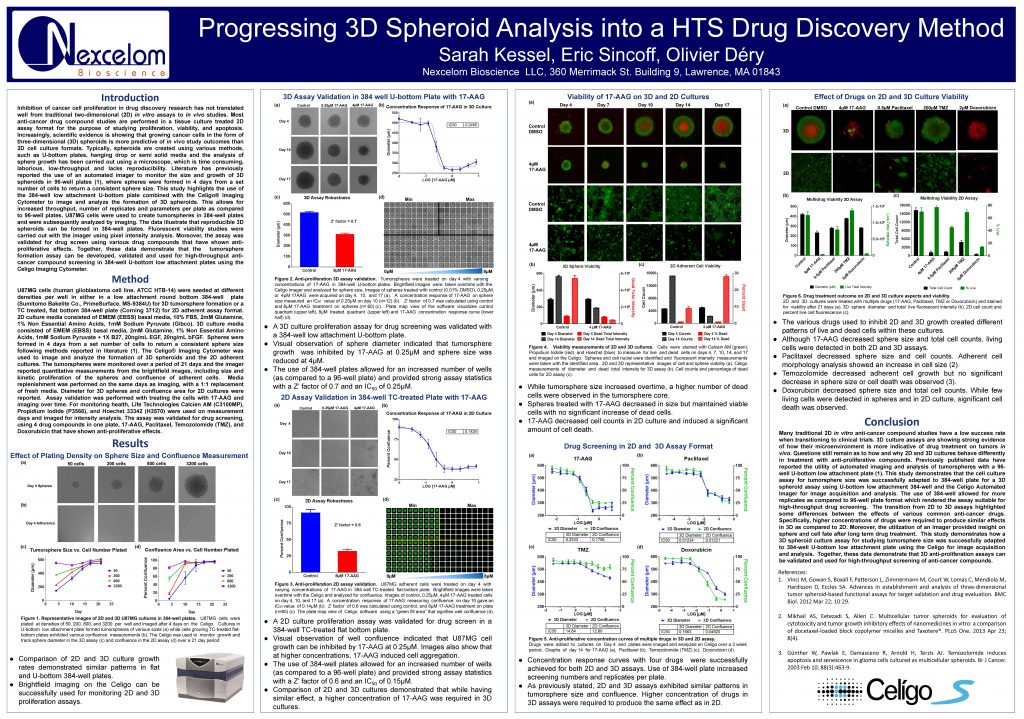Progressing 3D Spheroid Analysis into a HTS Drug Discovery Method
Sarah Kessel, Eric Sincoff, and Olivier Dery
Inhibition of cancer cell proliferation in drug discovery research has not translated well from traditional two-dimensional (2D) in vitro assays to in vivo studies. Most anti-cancer drug compound studies are performed in a tissue culture treated 2D assay format for the purpose of studying proliferation, viability, and apoptosis. Increasingly, scientific evidence is showing that growing cancer cells in the form of
three-dimensional (3D) spheroids is more predictive of in vivo study outcomes than 2D cell culture formats. Typically, spheroids are created using various methods, such as U-bottom plates, hanging drop or semi solid media and the analysis of sphere growth has been carried out using a microscope, which is time consuming, laborious, low-throughput and lacks reproducibility. Literature has previously reported the use of an automated imager to monitor the size and growth of 3D spheroids in 96-well plates (1), where spheres were formed in 4 days from a set number of cells to return a consistent sphere size. This study highlights the use of the 384-well low attachment U-bottom plate combined with the Celigo® Imaging Cytometer to image and analyze the formation of 3D spheroids. This allows for increased throughput, number of replicates and parameters per plate as compared to 96-well plates. U87MG cells were used to create tumorspheres in 384-well plates
and were subsequently analyzed by imaging. The data illustrate that reproducible 3D spheroids can be formed in 384-well plates. Fluorescent viability studies were carried out with the imager using pixel intensity analysis. Moreover, the assay was validated for drug screen using various drug compounds that have shown antiproliferative effects. Together, these data demonstrate that the tumorsphere formation assay can be developed, validated and used for high-throughput anticancer compound screening in 384-well U-bottom low attachment plates using the
Celigo Imaging Cytometer.

